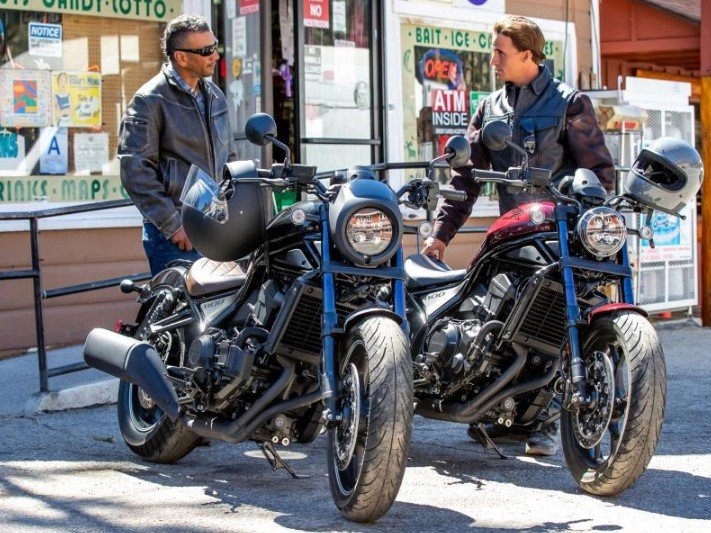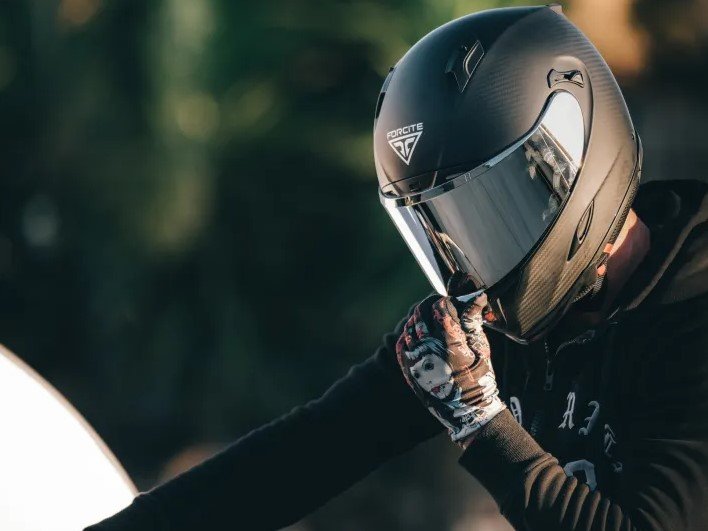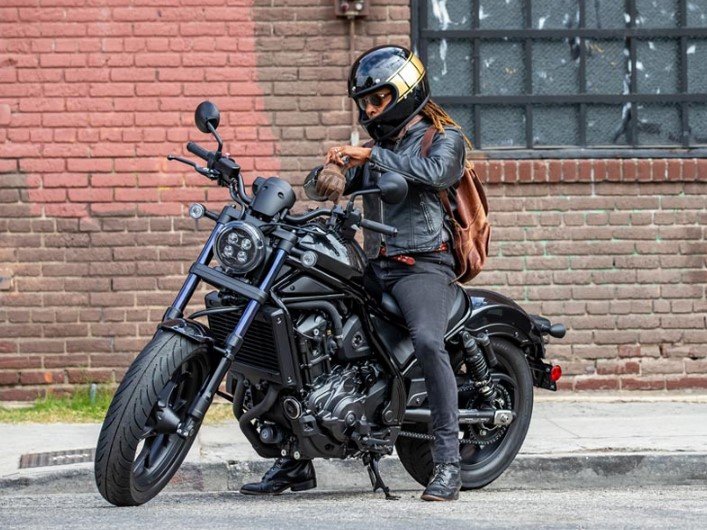
Motorcycles: Exploring the Freedom of Two Wheels
Introduction to Motorcycles
Motorcycles have long captured the imagination of thrill-seekers and adventurers alike. These two-wheeled marvels offer a unique blend of freedom, excitement, and practicality, making them a beloved mode of transportation for millions around the world. Let’s delve into the world of motorcycles, exploring their diverse types, components, riding techniques, and much more.
Types of Motorcycles
Motorcycles come in various shapes and sizes, each designed for specific purposes and riding styles. From sleek sport bikes to rugged dual-purpose machines, there’s a motorcycle for every rider’s preferences and needs.
Sport bikes
Sport bikes are built for speed and agility, featuring powerful engines, lightweight frames, and aggressive riding positions. They excel on twisty roads and race tracks, delivering exhilarating performance for adrenaline junkies.
Cruiser bikes
Cruiser bikes are synonymous with laid-back cruising and relaxed riding. With their low-slung designs, comfortable seats, and classic styling, cruisers are perfect for long highway rides and leisurely trips along the coast.
Touring bikes
Touring bikes are designed for long-distance travel, boasting spacious seats, ample storage, and advanced comfort features. Whether embarking on a cross-country road trip or a weekend getaway, touring bikes offer unmatched comfort and convenience.
Dual-purpose bikes
Dual-purpose bikes, also known as adventure bikes, are versatile machines capable of tackling both on-road and off-road adventures. With rugged construction, long-travel suspension, and adventure-ready features, these bikes are ideal for exploring remote trails and scenic landscapes.
Scooters
Scooters are lightweight and nimble urban commuters, offering easy maneuverability and fuel efficiency for navigating city streets. With their step-through designs and automatic transmissions, scooters are popular choices for urban dwellers and first-time riders.
Motorcycle Components
Understanding the key components of a motorcycle is essential for both new riders and seasoned enthusiasts. From the engine to the transmission, each part plays a vital role in the overall performance and functionality of the bike.
Engine
The engine is the heart of any motorcycle, generating the power needed to propel the bike forward. Whether it’s a high-revving inline-four or a torquey V-twin, the engine’s design and characteristics significantly impact the bike’s performance and riding experience.
Frame
The frame provides the structural backbone of the motorcycle, supporting the engine, suspension, and other components. Frames come in various configurations, including tubular steel, aluminum alloy, and composite materials, each offering unique advantages in terms of strength, weight, and handling.
Wheels and tires
Wheels and tires play a crucial role in the motorcycle’s traction, stability, and handling characteristics. Different types of tires, such as sport, touring, and off-road, are available to suit various riding conditions and preferences.
Suspension system
The suspension system absorbs bumps and vibrations from the road, ensuring a smooth and comfortable ride for the rider. Components such as forks, shock absorbers, and swingarms work together to maintain traction and control in diverse terrain.
Brakes
Brakes are essential for slowing down and stopping the motorcycle safely. Whether it’s traditional disc brakes or advanced ABS systems, reliable braking performance is critical for rider safety and confidence on the road.
Transmission
The transmission transfers power from the engine to the wheels, allowing the rider to change gears and control speed effectively. Manual, automatic, and semi-automatic transmissions are available, each offering distinct advantages in terms of simplicity, performance, and convenience.
Motorcycle Riding Gear
Safety should always be a top priority for motorcyclists, and wearing the proper gear is essential for protecting oneself in the event of an accident or fall.
Helmet
A high-quality helmet is the most important piece of safety gear for any motorcyclist, providing protection for the head and reducing the risk of traumatic brain injuries in the event of a crash.
Jacket
A durable motorcycle jacket offers protection against abrasion and impact injuries, as well as insulation from wind, rain, and other elements. Jackets come in various materials and styles, including leather, textile, and mesh, to suit different riding conditions and preferences.
Gloves
Motorcycle gloves provide grip, dexterity, and protection for the hands, reducing the risk of injuries during falls and collisions. Features such as armor, padding, and touchscreen compatibility enhance comfort and safety for riders.
Pants
Abrasion-resistant pants or riding jeans are essential for protecting the lower body from road rash and injuries in the event of a crash. Reinforced knees, hips, and seat areas offer additional impact protection and durability.
Boots
Sturdy motorcycle boots provide ankle support, grip, and protection for the feet and lower legs. Features such as reinforced toe caps, ankle armor, and oil-resistant soles enhance safety and comfort for riders on the road.
Benefits of Riding a Motorcycle
Riding a motorcycle offers numerous advantages beyond mere transportation, making it a popular choice for commuters, enthusiasts, and adventurers alike.
Fuel efficiency
Motorcycles typically achieve better fuel economy than cars, saving riders money on fuel costs and reducing their environmental footprint.
Maneuverability
Motorcycles are more agile and nimble than cars, allowing riders to navigate through traffic congestion and tight spaces with ease.
Cost-effectiveness
In addition to lower fuel costs, motorcycles generally require less maintenance and have lower insurance premiums than cars, making them a cost-effective transportation option for many riders.
Thrill and enjoyment
The sense of freedom, adventure, and excitement that comes with riding a motorcycle is unparalleled, providing riders with a unique and exhilarating experience every time they hit the road.
Safety Tips for Motorcyclists
While motorcycles offer many benefits, it’s essential for riders to prioritize safety and take precautions to minimize the risk of accidents and injuries.
Wear proper gear
Always wear a DOT-approved helmet and protective riding gear, including a jacket, gloves, pants, and boots, to protect yourself in the event of a crash.
Follow traffic rules
Obey speed limits, traffic signals, and road signs, and ride defensively to anticipate and avoid potential hazards on the road.
Keep a safe distance
Maintain a safe following distance from other vehicles, and always be prepared to react quickly to changes in traffic flow and road conditions.
Be visible to other drivers
Use headlights, turn signals, and reflective gear to make yourself more visible to other motorists, especially in low-light conditions or inclement weather.
Regular maintenance
Keep your motorcycle well-maintained by performing regular inspections, oil changes, tire checks, and brake adjustments to ensure optimal performance and safety on the road.
Popular Motorcycle Brands
Several manufacturers produce a wide range of motorcycles catering to different tastes, preferences, and riding styles.
Harley-Davidson
Harley-Davidson is synonymous with American motorcycle culture, known for its iconic cruiser bikes and loyal fan base.
Honda
Honda offers a diverse lineup of motorcycles, ranging from sport bikes and touring models to off-road and adventure bikes, known for their reliability and innovation.
Yamaha
Yamaha is a leading manufacturer of motorcycles, producing everything from high-performance sport bikes and motocross machines to versatile dual-purpose and touring bikes.
Kawasaki
Kawasaki is renowned for its powerful sport bikes and off-road motorcycles, known for their performance, durability, and cutting-edge technology.
Ducati
Ducati is a prestigious Italian motorcycle manufacturer, celebrated for its exotic sport bikes, high-performance engines, and racing heritage.
Motorcycle Maintenance Tips
Proper maintenance is essential for keeping your motorcycle running smoothly and safely for years to come.
Regular oil changes
Change your motorcycle’s oil and oil filter at regular intervals to maintain engine performance and longevity.
Check tire pressure
Monitor tire pressure regularly and adjust as needed to ensure proper traction, handling, and tire wear.
Inspect brakes
Check brake pads, rotors, and fluid levels regularly to ensure optimal braking performance and safety on the road.
Clean and lubricate chain
Keep the drive chain clean and properly lubricated to prevent wear, reduce friction, and extend its lifespan.
Regular servicing
Schedule routine maintenance and inspections with a qualified mechanic to address any potential issues and keep your motorcycle in top condition.
Motorcycle Riding Techniques
Mastering essential riding techniques is key to becoming a skilled and confident motorcyclist.
Body positioning
Maintain proper body positioning and posture while riding to maximize stability, control, and comfort on the bike.
Countersteering
Use countersteering techniques to initiate turns and maintain control at various speeds, leaning the motorcycle into corners smoothly and efficiently.
Braking techniques
Practice proper braking techniques, including using both front and rear brakes, modulating brake pressure, and maintaining control during emergency stops.
Cornering tips
Approach corners with the correct speed and line, looking through the turn and applying throttle smoothly to maintain traction and control.
Riding in different weather conditions
Adapt your riding style and technique to various weather conditions, such as rain, wind, and fog, to ensure safety and confidence on the road.
Motorcycle Clubs and Communities
Joining a motorcycle club or community offers numerous benefits, including camaraderie, support, and shared experiences with fellow riders.
Benefits of joining a motorcycle club
Motorcycle clubs provide opportunities for socializing, networking, and participating in group rides, events, and charitable activities.
Riding events and gatherings
Motorcycle clubs organize a wide range of riding events, rallies, and gatherings, allowing members to explore new destinations, connect with other riders, and share their passion for motorcycles.
Community support and camaraderie
Motorcycle clubs foster a sense of community and belonging among members, offering support, encouragement, and friendship both on and off the road.
Environmental Impact of Motorcycles
While motorcycles offer many benefits, it’s essential to consider their environmental impact and explore ways to minimize emissions and promote sustainability.
Lower carbon emissions compared to cars
Motorcycles typically produce fewer emissions than cars, thanks to their smaller engines and more efficient fuel consumption, making them a greener transportation option for environmentally conscious riders.
Efficient fuel consumption
Motorcycles consume less fuel than cars, offering higher fuel efficiency and reducing overall fuel consumption and greenhouse gas emissions.
Potential for electric motorcycles
The rise of electric motorcycles offers promising opportunities to further reduce emissions and reliance on fossil fuels, providing eco-friendly alternatives for environmentally conscious riders.
Motorcycle Laws and Regulations
Understanding and complying with motorcycle laws and regulations is essential for staying safe and legal on the road.
Licensing requirements
Obtain the necessary motorcycle license or endorsement from your state or country’s licensing authority, and adhere to all requirements and restrictions for operating a motorcycle legally.
Helmet laws
Many jurisdictions require motorcyclists to wear helmets while riding for safety reasons, with specific regulations regarding helmet type, quality, and certification.
Lane splitting regulations
Lane splitting, or riding between lanes of traffic, is legal in some areas but prohibited in others, so it’s essential to know and follow the rules and guidelines for lane splitting in your jurisdiction.
Insurance requirements
Motorcycle insurance is mandatory in most places, providing financial protection and coverage for medical expenses, property damage, and liability in the event of an accident or injury.
Motorcycle Tourism
Exploring the world on two wheels is a dream come true for many motorcycle enthusiasts, with countless scenic routes, destinations, and attractions to discover.
Popular motorcycle routes and destinations
From coastal highways and mountain passes to scenic countryside roads and historic landmarks, there’s no shortage of spectacular routes and destinations to explore on a motorcycle.
Motorcycle-friendly accommodations
Many hotels, campgrounds, and resorts cater to motorcycle travelers, offering amenities such as secure parking, motorcycle rentals, and rider-friendly services and facilities.
Travel tips for motorcycle enthusiasts
Plan your motorcycle trips carefully, considering factors such as weather, road conditions, fuel stops, and accommodations, to ensure a safe, enjoyable, and memorable journey.
Famous Motorcycle Races and Events
For adrenaline junkies and racing fans, attending a motorcycle race or event is an exhilarating experience like no other.
MotoGP
MotoGP is the premier motorcycle racing championship, featuring the world’s top riders and manufacturers competing on high-performance bikes at iconic racetracks around the globe.
Isle of Man TT
The Isle of Man TT is one of the most legendary and challenging road racing events, attracting daredevil riders from around the world to tackle the treacherous mountain course at breakneck speeds.
Daytona Bike Week
Daytona Bike Week is an annual motorcycle rally and festival held in Daytona Beach, Florida, featuring bike shows, races, concerts, and other entertainment for riders and enthusiasts.
Sturgis Motorcycle Rally
The Sturgis Motorcycle Rally is the largest motorcycle rally in the United States, drawing hundreds of thousands of riders to the Black Hills of South Dakota for a week of riding, music, and revelry.
Conclusion
In conclusion, motorcycles represent more than just a mode of transportation; they embody freedom, adventure, and camaraderie for millions of riders worldwide. Whether cruising along scenic highways, carving through mountain passes, or exploring remote trails, motorcycles offer a unique and exhilarating experience that transcends mere transportation. By embracing safety, responsibility, and a sense of community, riders can fully enjoy the thrill and freedom of two-wheeled travel while minimizing risks and maximizing enjoyment on the open road.
FAQs (Frequently Asked Questions)
1. Are motorcycles dangerous?
While motorcycles can be riskier than cars due to their lack of protection in the event of a crash, proper training, gear, and adherence to safety guidelines can significantly reduce the risk of accidents and injuries.
2. How do I choose the right motorcycle for me?
Consider factors such as your riding experience, intended use, budget, and physical stature when choosing a motorcycle, and test ride different models to find the one that best suits your needs and preferences.
3. Do I need special training to ride a motorcycle?
Yes, obtaining proper training and certification from a reputable motorcycle safety course is highly recommended for new riders to learn essential riding skills, safety techniques, and traffic laws.
4. What should I do in case of a motorcycle breakdown?
If your motorcycle breaks down on the road, move to a safe location away from traffic, and assess the situation. If necessary, call for roadside assistance or a tow truck to transport your bike to a repair shop for inspection and repairs.
5. Can I ride a motorcycle in winter or adverse weather conditions?
Riding a motorcycle in winter or adverse weather conditions requires extra caution and preparation, including wearing appropriate gear, reducing speed, and avoiding slippery or hazardous road conditions whenever possible.



